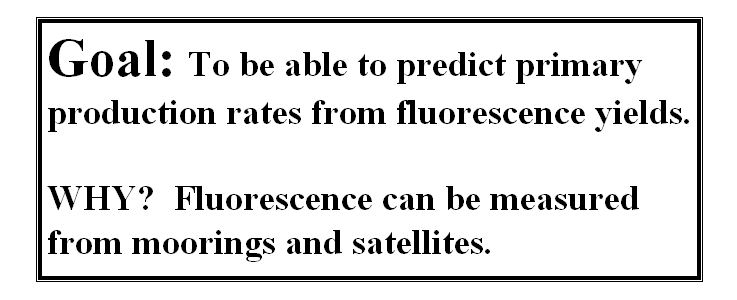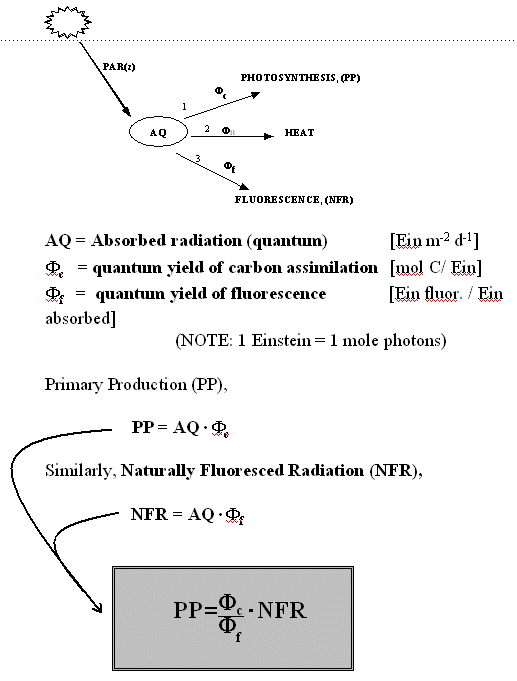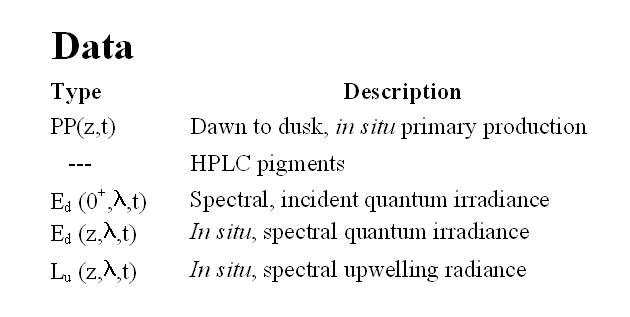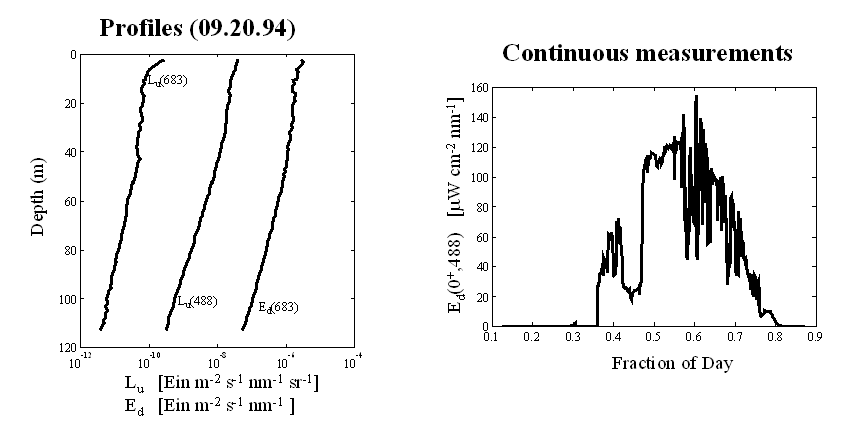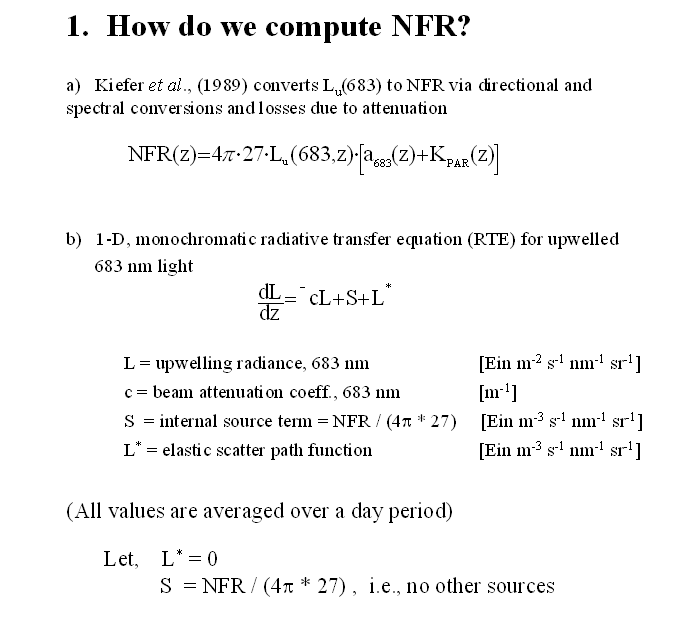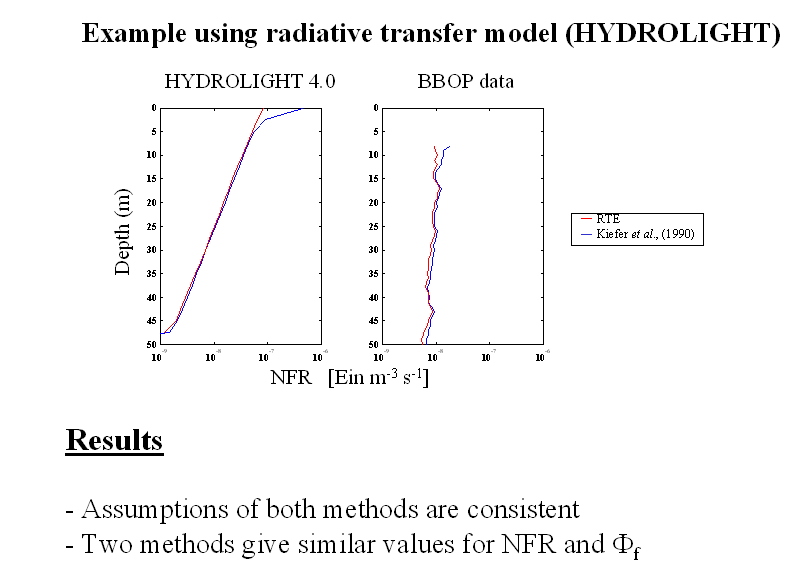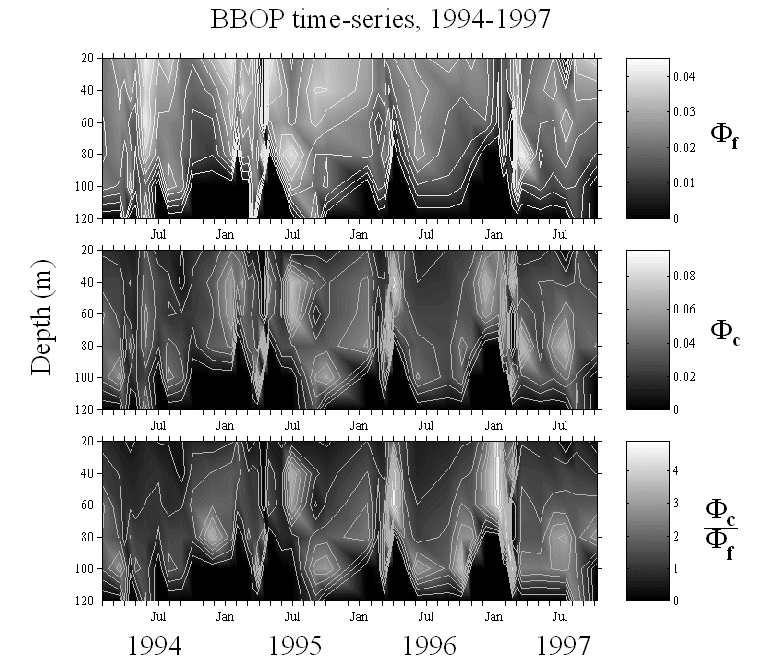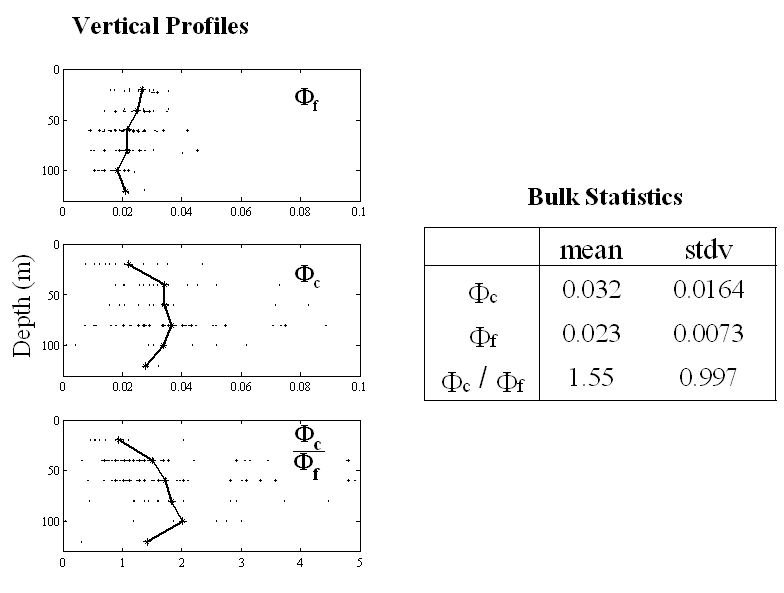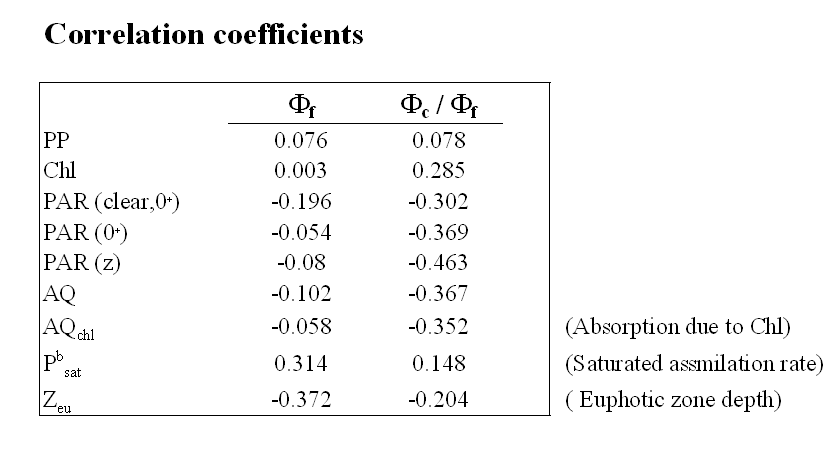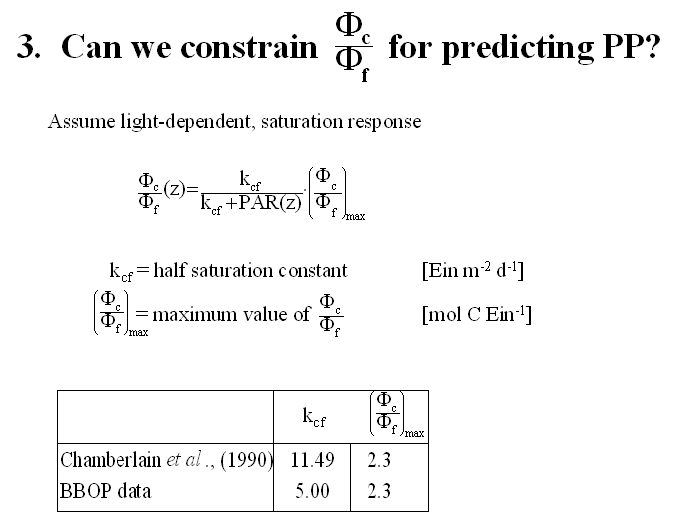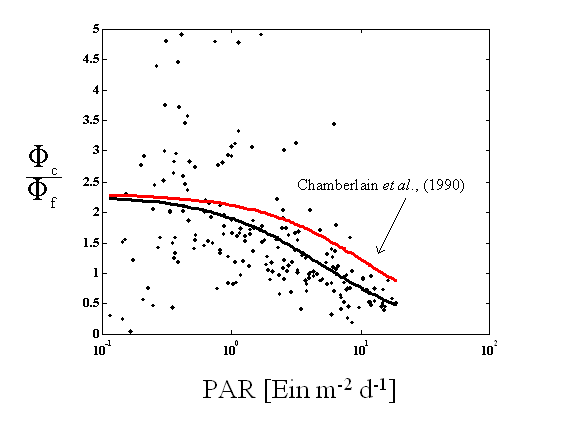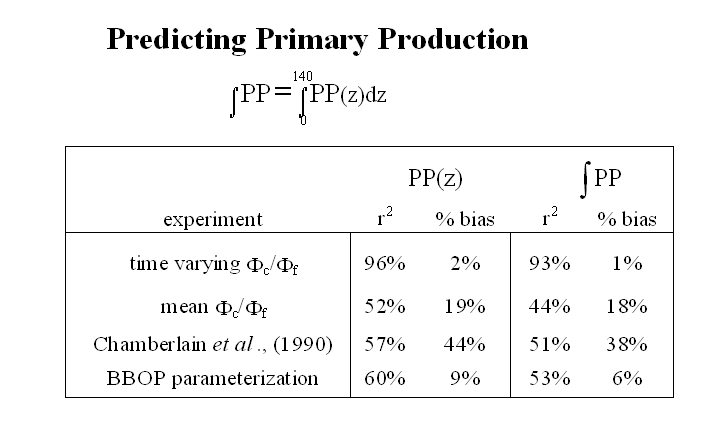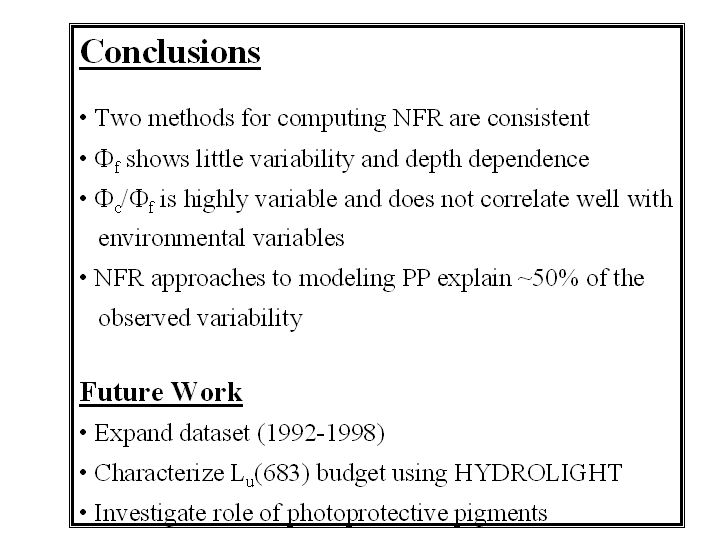Toby K. Westberry1,2 and David A. Siegel1
1Institute for Computational
Earth System Science, University of California, Santa Barbara, 2Interdepartmental
Program in Marine Science, University of California, Santa Barbara,
Abstract.
Solar stimulated phytoplankton fluorescence yields have been used as an
instantaneous, non-intrusive means of assessing phytoplankton biomass and
rates of primary production. The quantum yields for carbon assimilation,
Fc and solar stimulated fluorescence,
Ff, quantify photochemical energy
flow through the phytoplankton component of the marine ecosystem.
Data collected as part of the Bermuda Bio-Optics Project (BBOP; 1992-1997)
allows us to accurately characterize the variability these and other biogeochemically
relevant parameters and allows us to construct a photon budget for the
Sargasso Sea. In addition, knowledge of Fc/Ff
and the volume flux of fluoresced radiation enables determinations of primary
production to be obtained. As part of this analysis, the method of
Kiefer et al. (1989) for computing naturally fluoresced radiation is validated
using a full spectral, radiative transfer model. Preliminary results
from BBOP give fluorescence quantum yields similar to previous studies
varying from 1 to 5%, while the ratio of Fc/Ff
varies from ~ 0 to 5 atoms carbon fixed per quanta fluoresced.
Only weak statistical relationships were found among the quantum yields
and other physical and photo-physiological variables, though a seasonal
cycle is evident. No obvious predictive relationships have yet been
described by the data. We will address the coupling of the quantum
yield parameters and their significance for the prediction of primary production
rates.